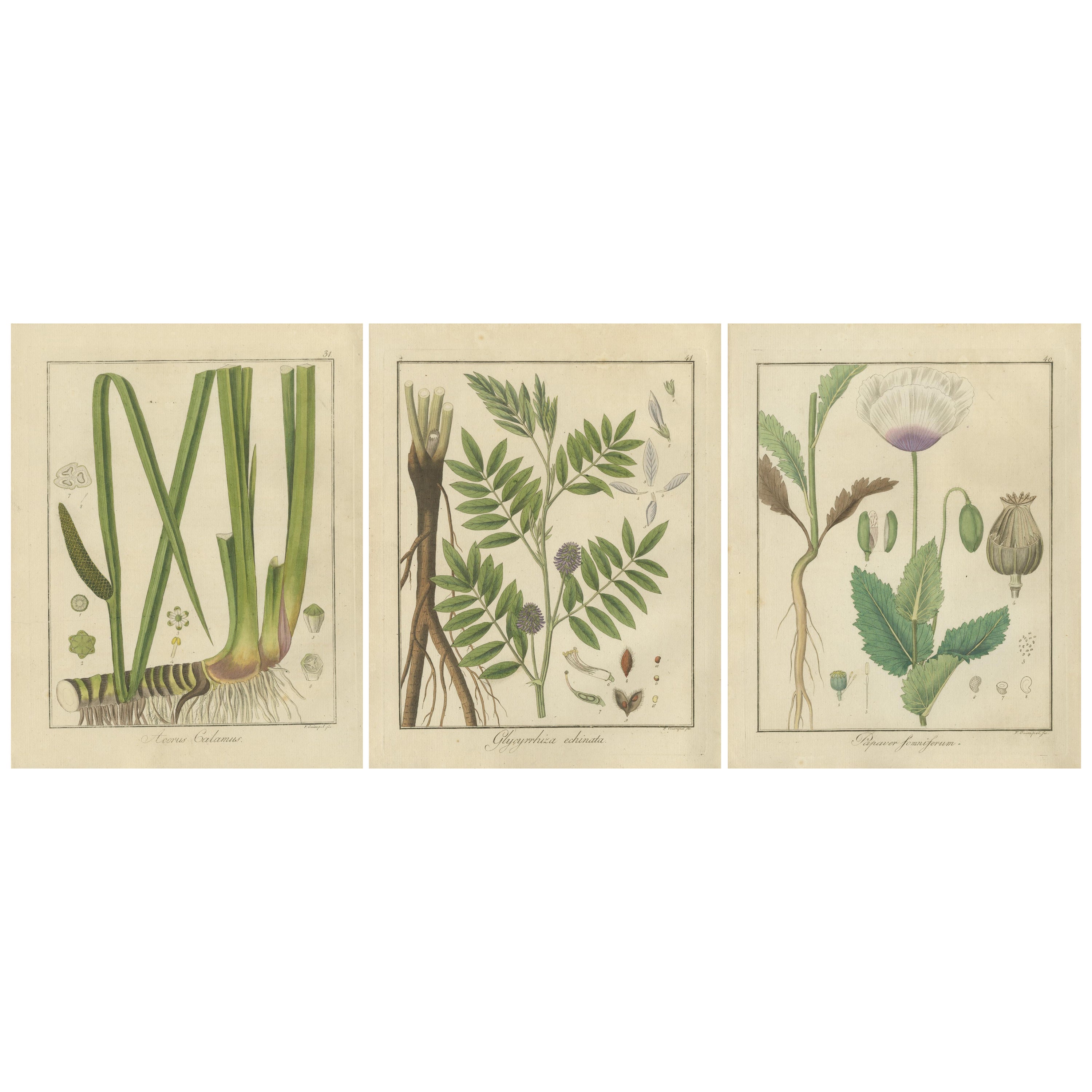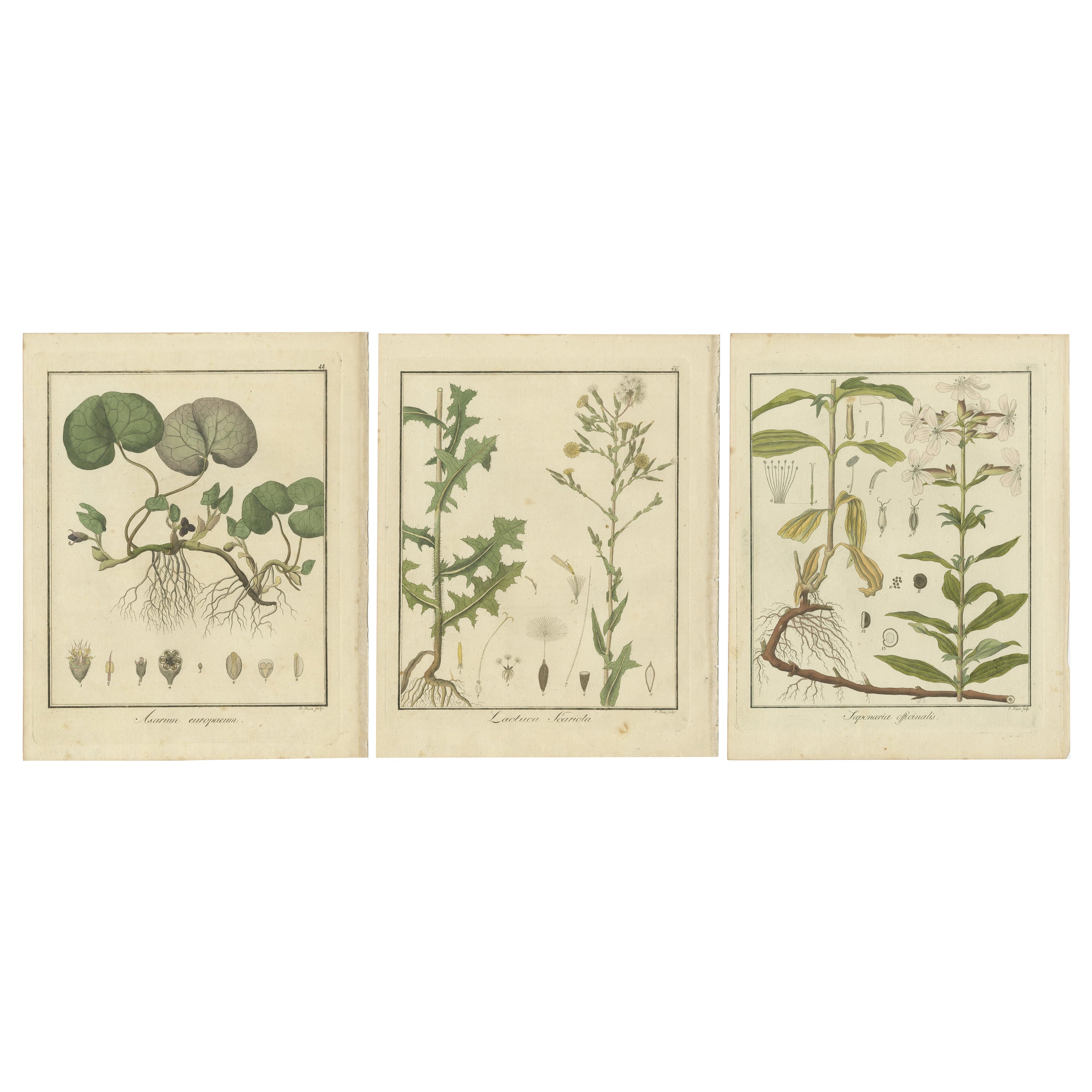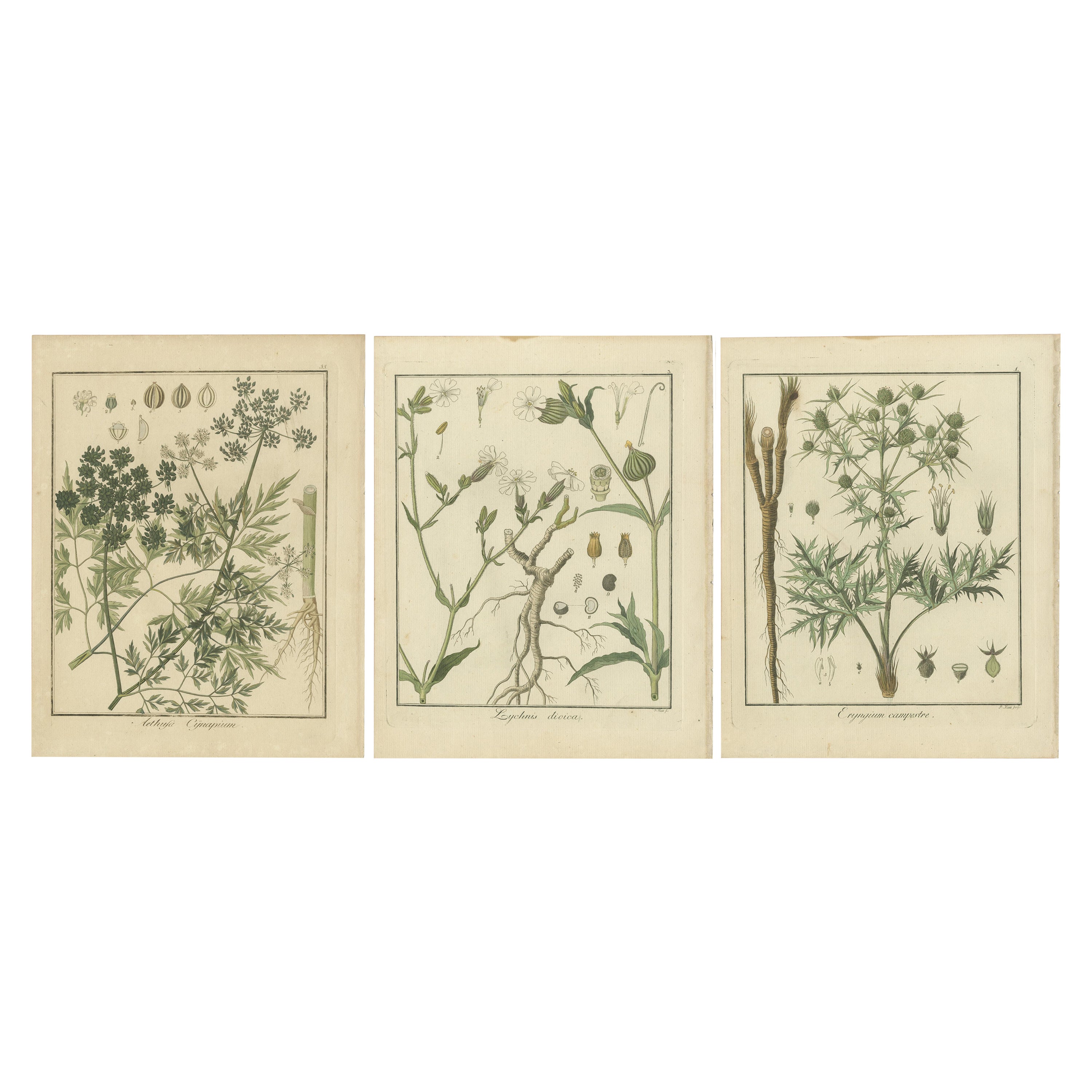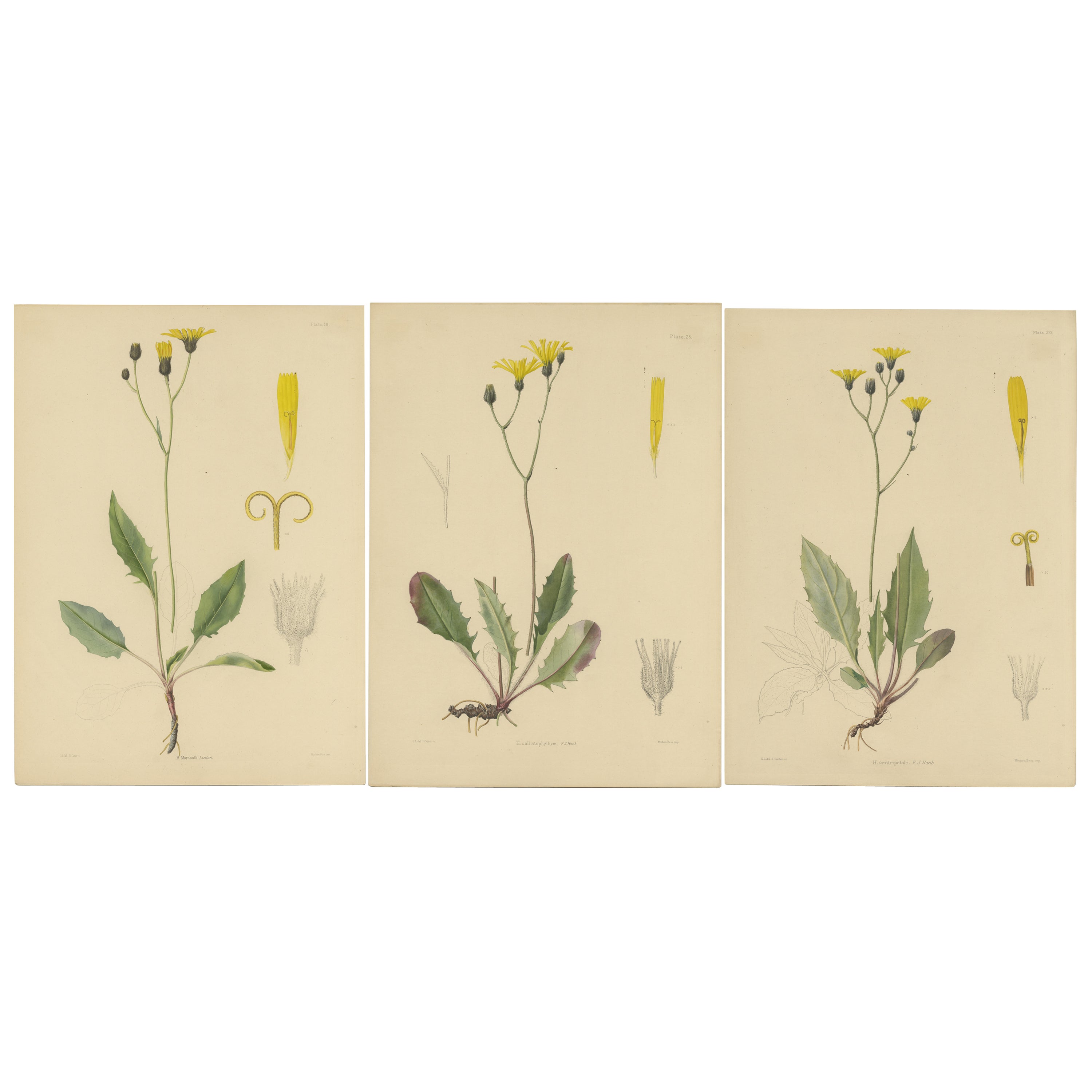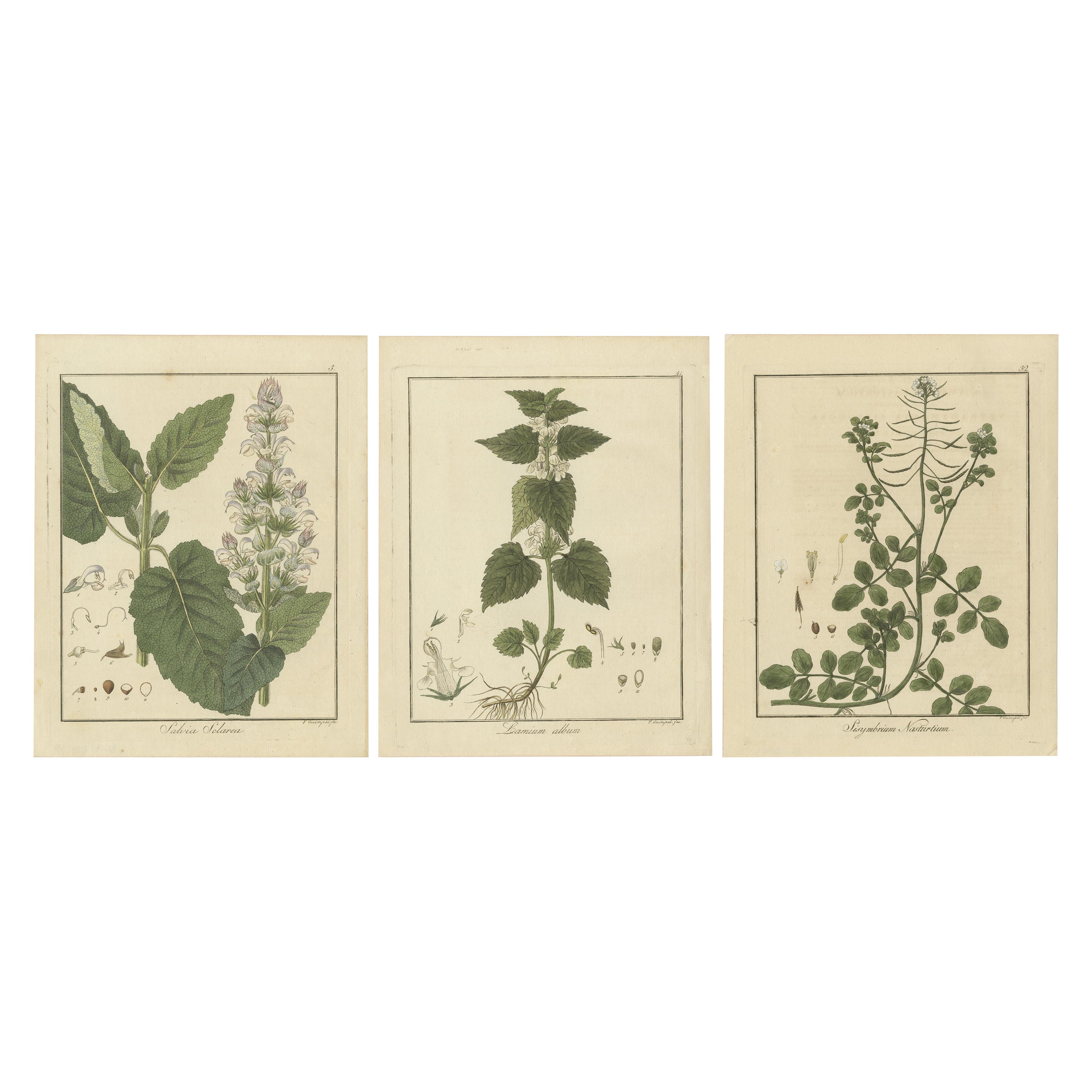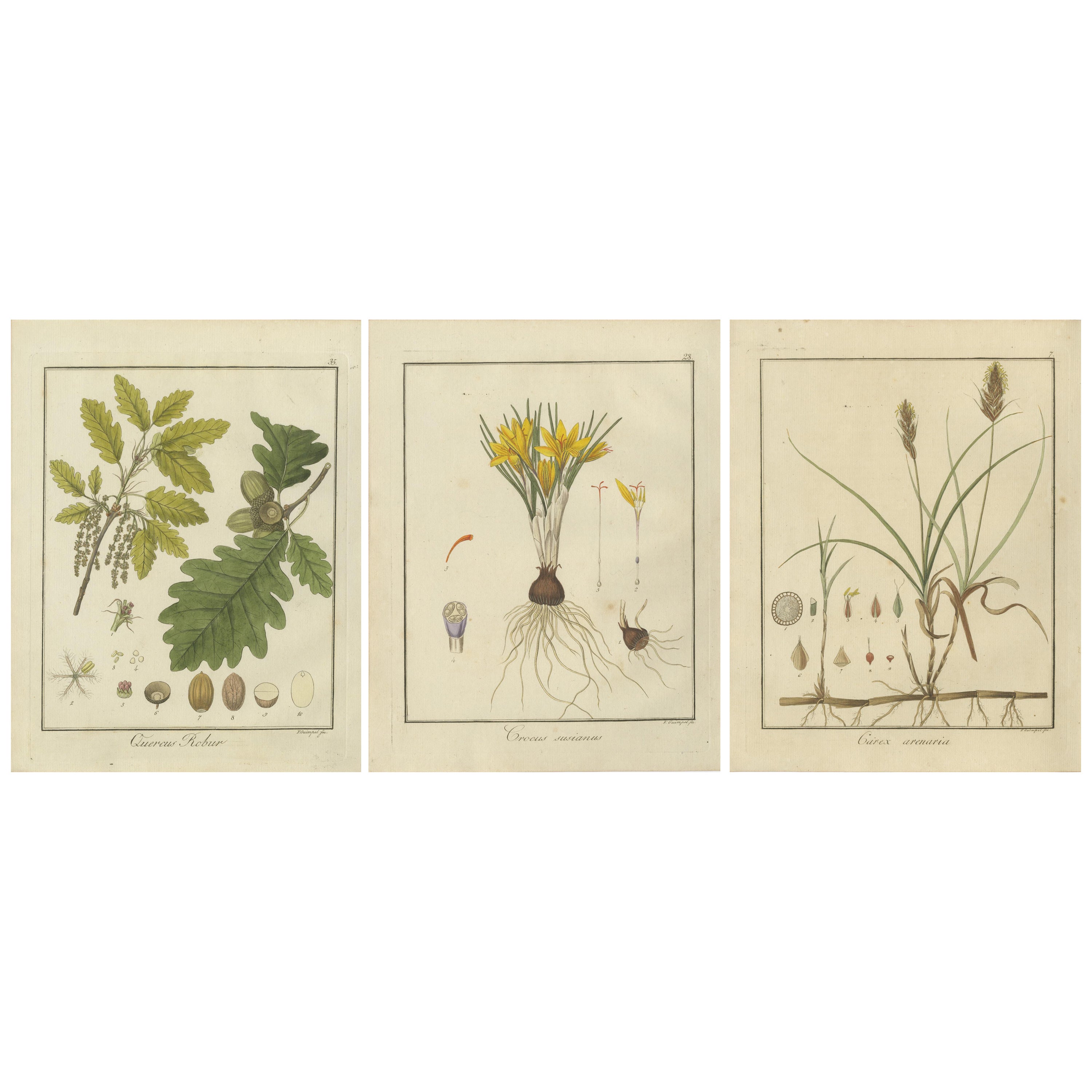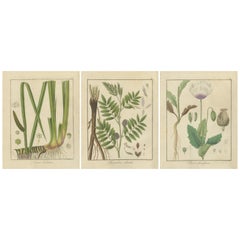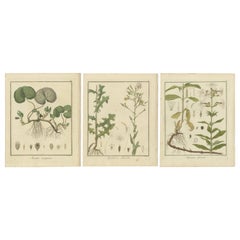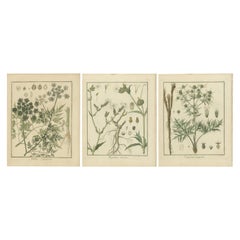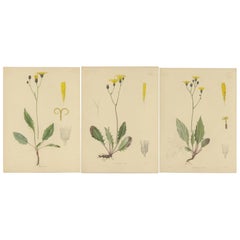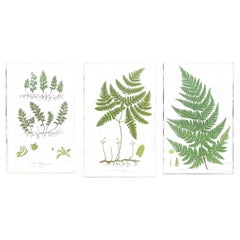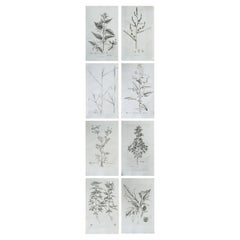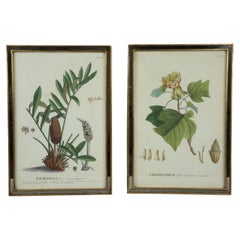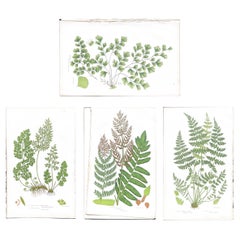Items Similar to Wild Lettuce, Tansy, and Licorice: Botanical Illustrations from 1819
Want more images or videos?
Request additional images or videos from the seller
1 of 6
Wild Lettuce, Tansy, and Licorice: Botanical Illustrations from 1819
$561.21per set
$701.52per set20% Off
£417.97per set
£522.47per set20% Off
€472per set
€590per set20% Off
CA$787.13per set
CA$983.91per set20% Off
A$863.27per set
A$1,079.09per set20% Off
CHF 445.23per set
CHF 556.53per set20% Off
MX$10,312.54per set
MX$12,890.67per set20% Off
NOK 5,646.83per set
NOK 7,058.53per set20% Off
SEK 5,297.36per set
SEK 6,621.71per set20% Off
DKK 3,596.71per set
DKK 4,495.89per set20% Off
About the Item
These original handcolored botanical engravings are from the work titled "Getreue Darstellung und Beschreibung der in der Arzenykunde gebrauchlichen Gewächse" (which translates to "Accurate Depiction and Description of Plants Used in Medicine"), specifically from the 6th edition published in 1819. This publication was authored by Friedrich Gottlob Hayne, a renowned German botanist, and focused on medicinal plants used in pharmacology at the time.
The engravings are:
1. Lactuca virosa (Wild Lettuce)
2. Tanacetum vulgare (Tansy)
3. Glycyrrhiza glabra (Licorice)
Hayne's work aimed to provide accurate and detailed botanical illustrations to aid in the identification and study of medicinal plants. The use of such detailed illustrations was crucial for pharmacists and botanists of that era, as they often relied on visual identification for their work.
The plates in Hayne’s publication are known for their accuracy and detail, reflecting the high standards of botanical illustration in the early 19th century.
In more details: Here’s a brief description of each engraving:
1. An illustration of a plant labeled "Lactuca virosa," which is commonly known as wild lettuce. The drawing includes details of the plant’s structure, such as its leaves, flowers, and roots, as well as smaller illustrations showing close-ups of parts like seeds or flower structures.
2. A plant labeled "Tanacetum vulgare," commonly known as tansy. The plant is shown with its characteristic yellow button-like flowers, fern-like leaves, and root structure. Smaller detailed parts of the plant are also depicted, which might represent different stages of the flower and seeds.
3. This drawing is of "Glycyrrhiza glabra," commonly known as licorice. The illustration features the plant’s compound leaves, flowers, and the branching root system. Additional details of flowers, seeds, and possibly the fruit are shown in smaller illustrations around the main plant image.
These botanical illustrations are detailed and seem to be educational or for scientific study, showcasing the different parts of each plant for identification and study purposes. If you have specific questions or need further analysis of these illustrations, feel free to ask!
- Dimensions:Height: 10.83 in (27.5 cm)Width: 8.55 in (21.7 cm)Depth: 0 in (0.02 mm)
- Sold As:Set of 3
- Materials and Techniques:Paper,Engraved
- Period:
- Date of Manufacture:1819
- Condition:Condition: very good given age. General age-related toning. Original hand-colored etching / engraving on hand laid (verge) paper with matermark. The Please study scans carefully.
- Seller Location:Langweer, NL
- Reference Number:Seller: BG-13747-29, BG-13747-30, BG-13747-311stDibs: LU3054341260982
About the Seller
5.0
Recognized Seller
These prestigious sellers are industry leaders and represent the highest echelon for item quality and design.
Platinum Seller
Premium sellers with a 4.7+ rating and 24-hour response times
Established in 2009
1stDibs seller since 2017
2,676 sales on 1stDibs
Typical response time: <1 hour
- ShippingRetrieving quote...Shipping from: Langweer, Netherlands
- Return Policy
Authenticity Guarantee
In the unlikely event there’s an issue with an item’s authenticity, contact us within 1 year for a full refund. DetailsMoney-Back Guarantee
If your item is not as described, is damaged in transit, or does not arrive, contact us within 7 days for a full refund. Details24-Hour Cancellation
You have a 24-hour grace period in which to reconsider your purchase, with no questions asked.Vetted Professional Sellers
Our world-class sellers must adhere to strict standards for service and quality, maintaining the integrity of our listings.Price-Match Guarantee
If you find that a seller listed the same item for a lower price elsewhere, we’ll match it.Trusted Global Delivery
Our best-in-class carrier network provides specialized shipping options worldwide, including custom delivery.More From This Seller
View AllSweet Flag, Russian Licorice, and Opium Poppy: Botanical Illustrations 1819
Located in Langweer, NL
Hand-Colored Engravings that were published in the 1819 sixth edition of "Getreue Darstellung und Beschreibung der in der Arzenykunde gebrauchlichen Gewächse" by Friedrich Gottlob Ha...
Category
Antique 1810s Prints
Materials
Paper
$561 Sale Price / set
20% Off
Engravings of European Wild Ginger, Prickly Lettuce, and Common Soapwort, 1819
Located in Langweer, NL
Description of the Plants in the three original engravings on offer:
1. Asarum europaeum (Common Name: European Wild Ginger)
- This engraving depicts Asarum europaeum, commonly k...
Category
Antique 1810s German Prints
Materials
Paper
Engravings of Fool's Parsley, Red Campion, and Field Eryngo, Published in 1819
Located in Langweer, NL
Description of the Plants in the three combined original antique engravings:
1. Aethusa cynapium (Common Name: Fool's Parsley)
- This engraving depicts Aethusa cynapium, commonly...
Category
Antique 1810s Prints
Materials
Paper
$561 Sale Price / set
20% Off
Set of 3 Antique Botany Prints H. Marshalli and Other Flowering Plants
Located in Langweer, NL
Set of 3 antique botany prints titled 'H. Marshalli, H. callistophyllum, H. centripetale'. It shows three species of flowering plants. Published after Carter by Mintern Bros, circa 1...
Category
Antique Late 19th Century Prints
Materials
Paper
$418 Sale Price / set
20% Off
Free Shipping
Engravings of Clary Sage, White Dead-Nettle, and Watercress, Published in 1819
Located in Langweer, NL
Three original botanical engravings in old handcoloring on hand-laid paper with watermark.
1. Salvia sclarea (Common Name: Clary Sage)
- This engraving features Salvia sclarea, ...
Category
Antique 1810s Prints
Materials
Paper
$561 Sale Price / set
20% Off
English Oak, Cloth of Gold Crocus, and Sand Sedge: Botanical Illustrations 1819
Located in Langweer, NL
Hand-Colored Engravings that were published in the 1819 sixth edition of "Getreue Darstellung und Beschreibung der in der Arzenykunde gebrauchlichen Gewächse" by Friedrich Gottlob Ha...
Category
Antique 1810s Prints
Materials
Paper
$561 Sale Price / set
20% Off
You May Also Like
Set of Three Antique Botanical Fern Prints by Anne Pratt, Hand-Colored, 1855
Located in Fukuoka, JP
A vibrant trio of original hand-colored lithographs by celebrated British botanical illustrator Anne Pratt, published in 1855 as part of her important work “The British Ferns”. These...
Category
Antique 19th Century British Prints
Materials
Paper
Set of 8 Original Antique Large Scale Botanical Prints. Dated 1791
Located in St Annes, Lancashire
Wonderful set of 8 botanical prints.
A beautiful colour of off-white/cream to the paper.
Dated 1791
Originally from " Flora Londinensis " published by William Curtis
Copper-plat...
Category
Antique 1790s English Georgian Prints
Materials
Paper
Two 18th Century Hand Colored Botanical Engraving of Plants from (1771)
Located in Stockholm, SE
Adorning the walls, two gracefully framed botanical engravings from 1771 capture nature's elegance in exquisite detail. Delicate strokes of...
Category
Antique 1770s European George III Decorative Art
Materials
Paper
Set of Four Antique Botanical Fern Prints by Anne Pratt, Hand-Colored, 1855
Located in Fukuoka, JP
A rich and decorative set of four original hand-colored lithographs by Anne Pratt, a leading botanical illustrator of the Victorian era. These detailed prints were published in 1855 ...
Category
Antique 19th Century British Prints
Materials
Paper
19th Century Botanical Engravings of flowers and insects
Located in Seaford, GB
Pair of 19th-century British plant botanicals Engravings with Insects – John Curtis (1791-1862)
Sold as a pair - Please let us know your choice on your purchase order:
1 - Dandeli...
Category
Antique 19th Century English Victorian Prints
Materials
Paper
Curtis Botanical Magazine Floral Prints c.1810
Located in Savannah, GA
Sydenham Teast Edwards
(British, 1768-1819)
A pair of botanical prints from Curtis’s Botanical Magazine, circa 1810 illustrated by Syd Edwards.
Plate 705: Porcelane Flowered Ge...
Category
Antique 1810s British Prints
Materials
Fabric, Glass, Wood, Paper
